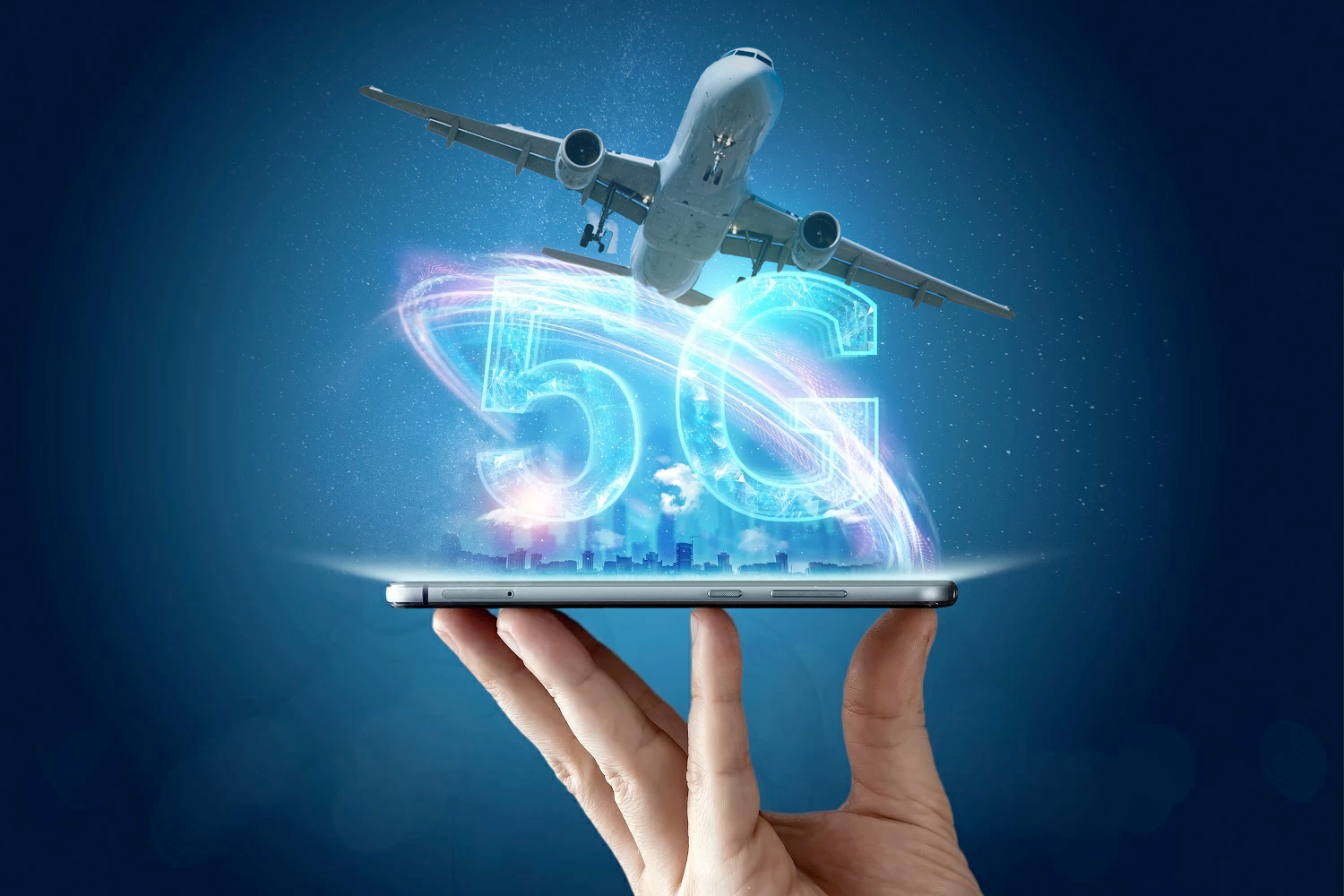Traveling Abroad? Troubleshooting 5G Challenges in India and Abroad
This article discusses the details involved when selecting a mobile phone in the USA to ensure network compatibility with regions abroad (especially India) as well as tips on ensuring your device will work in peek performance while you are traveling.

What is this article about?
This article assumes that you plan to buy a phone in the US (UK, Europe or AU) to add an India SIM card from one of the popular three telecom providers - Bharati Airtel, Reliance Jio or Vodaphone. It covers the basics on how to ensure that the network bands supported on your phone are compatible with what is available in India.
What this article is NOT about?
This article does not cover:
- How to acquire an India SIM card or enabling the SIM on your phone?
- The technology behind the Electromagnetic (EM) Spectrum and how it is provisioned across the globe.
- The best eSIM / data-roaming or international roaming options.
- How to go about getting a SIM card (or eSIM) in India?
These will be covered in a future article(s).
TLDR
Just take me to the step-by-step, I’m not interested in the details…
My First YouTube Video of this article
If you are busy with life and don’t have the time to read the article, then consider clicking on the video and add it to your “Watch Later” list and while you are on the road, you can catch up.
Why write this article?
Many of you (like myself) would plan ahead (when traveling to India after many, many years) and purchase a phone in the US (to get the best 5G network coverage while in India) in hopes that when you reach the airport in India, you can buy a local SIM card from one of the three popular telecom providers such as Bharati Airtel, Reliance Jio or Vodaphone. You will land thinking that you will be in business within minutes of landing to call your friends and family locally, and how you have saved those exorbitant international data roaming fees associated with your local US carriers while traveling abroad.
Or you may fall into the category, where you already have made a good investment in a dual-SIM card phone (you’ve been planning for this for a while now…) and you dropped in your India SIM you had from your previous 2G/3G phone, thinking you will have the best coverage that money can buy when you land.
In either one of the two cases, when you land in India and you activate the local SIM – reality kicks in and all you see on the network bar of your phone is a big fat “E” (no 2G, no 4G, no 5G, not even an LTE - just a plain big fat “E” displayed on the network bar).

This was my case. 😭 A $250 investment that went bad after months and months of planning. [Not to mention, not being able to call my pre-planned taxi-driver that was waiting at the airport parking for me to call.] If you want to avoid such issues then read on.
In this article, I will explain all the network details and what to look for when you buy the phone in the US, UK, Europe or AU to ensure that you have good solid connectivity from the moment you land in India (or anywhere abroad). The principles are the same but the specifics change with each country. If you understand the principles, you will know what to look for with each of your favorite destinations. So without any further delay, let’s jump right into the step-by-step guide.
Step-by-step Guide
Step-1: Make sure your phone has GSM. In India, they do not support CDMA. So if you have a Verizon or Sprint phone (unlocked with a dual-sim - you are out of luck).
Step-2: Ensure that your phone is unlocked. Most providers in the US such as TMobile will have their phones locked (when you buy it through their plan or you may have a SIM lock placed that prevents other SIMs from being added onto your device at the network level). You may need to specifically ask them to remove all locks before you travel (preferably weeks before your travel to allow the settings to propagate across the network to all the towers).
Step-3: Ensure it has the right network band support, not just the fact that it is a 5G phone. This is the primary focus of this article.
In India 600 MHz, 700 MHz, 800 MHz, 900 MHz, 1800 MHz, 2100 MHz, 2300 MHz, 2500 MHz, 3300 MHz, 26 GHz bands are currently in use for mobile 5G services. Out of this list, for the 5G spectrum, they utilize the following specific bands: n71, n28, n5, n8, n3, n1, n40, n41, n78, n257/n258. These bands are autctioned out in India to the telecom companies. The telecom companies bid for these bands within each state (28 states total in India). As of writing this article in January 5th, 2024, here are the specific bands allocated to each provider. This is the general scope without going into the state specifics on the “Telecom Circles” which we will cover later in this article.

You can stop at this level - if all your concern is general availability and not further tuning of the bands to your state/telecom circle.
Step-4: (Optional) Identify the Band Allocation by State to maximize network reception availability for the areas you plan to travel during your visit (based on Telecom Circles).
To further complicate the world of network bands, the bands are allocated/distributed across four telecom circles: Metropolitan, A Category, B Category, and C Category, as shown in the map below. If you are traveling between those regions or visiting someone in those boundary areas, or traveling across many states, then you need to pay more attention to this step.

Why the Telecom Circles?
National Telecom Policy of India in the year 1994 resulted in the geographical segregation of the country into 22 administrative units referred to as Telecom Circles (TCs). The creation of TCs was to enable targeted policy formulation and smooth implementation of the policy objectives of the government. The TCs were further clustered into four different categories, namely Metro, category A, category B, and category C each category signaling to the telecom service providers the unique market characteristics and the Teledensity potential of the region. [Excerpt taken from Springer Link: Examining categorization of Telecom Circles in India using unsupervised k-means clustering on techno-economic indicators]
Here are the links of the 5G bands implemented at the state-level by each telecom provider within India (read the note below before you visit the link):
NOTE: Pay attention to the “TD-NR” columns in each of the links. The “LTE” columns would come into play when 5G > 4G > 2G are not generally available. The LTE is built on the same “New-Radio” (NR) technology for providing the telecom providers as a way to utilize the new 5G but talk in an older communication protocol to allow greater support for coverage. The general rule of thumb is that “the higher the frequency (column #1 of the “Supported 5G Bands in India” table above), the shorter the coverage distance between you and the radio-tower”. [Ex. 600 MHz can travel long distances but reduces the amount of data that can be transmitted in each packet. Whereas 3300 MHz can travel short distances but carry lots of data per packet. Similarly, the smaller the frequency, the fewer phones it can support per square-meter density, hence the need for countries to switch to 5G and 6G bands.]
How can I tell what 5G network bands are supported by my phone?
Use this GSM Arena website, search for your phone model (Ex. “Samsung Galaxy A25”) and then in the result area, expand the “Network” section. Example shown below:


IMPORTANT NOTE: If you are visting regions at the edges of the country (the states designated under C Category) where you may share a border with another country such as Jammu and Kashmir, Assam, Bihar, Himachal Pradesh, North-East, etc., you need to go to each provider’s 5G page to determine the exact bands in that state, since some of the bands may have been used by the neighboring country already and therefore may not be provisioned in that state by that specific provider to reduce interference.
Now with all this said and done, please note that in India, you also have (for many, many years) an established LTE, 4G, and 2G fully implemented and they have their own bands/spectrum frequency allocations. If you are buying a brand like a Samsung, or an iPhone - then they may have a wide range of network bands that are supported in the other spectrums; namely, LTE, 2G, 4G, etc. But if you are going with a new brand (such as in my case with the BLU phone), you may end up in these fringes of network bands which may not be suited for the region of the world you are visiting.
Hopefully you got the full scoop on the story to make a wise decision about planning your trip and your mobile/smart phone options and network connectivity.
Cheers!
If you would like to show your support then consider subscribing below and/or buy me a cup of joe:
Today’s Quote

All the wealth acquired with perseverance (hard-work) by the worthy is for the exercise of benevolence (kindness).
- Kural 212 - Thiru Valluvar ( His Work )


